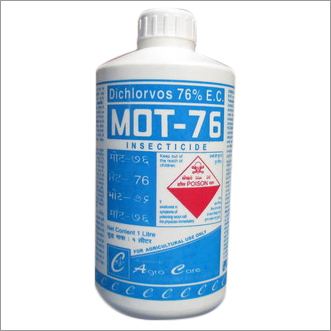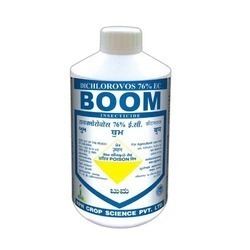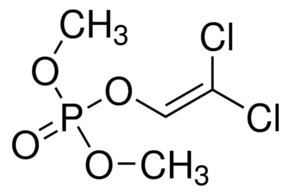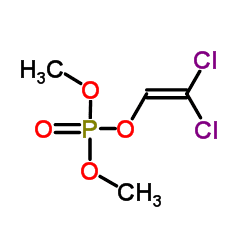Trade names DDVP, Vapona etc. PubChem CID 3039 Formula C4H7Cl2O4P Boiling point 74.1 °C | CAS Number 62-73-7 ChemSpider 2931 Molar mass 220.98 g/mol | |
 | ||
AHFS/Drugs.com International Drug Names ATCvet code QP52AB03 (WHO) QP53AF04 (WHO) | ||
Dichlorvos or 2,2-dichlorovinyl dimethyl phosphate (commonly abbreviated as DDVP) is a organophosphate, widely used as an insecticide to control household pests, in public health, and protecting stored product from insects. The compound has been commercially available since 1961 and has become controversial because of its prevalence in urban waterways and the fact that its toxicity extends well beyond insects.
Contents
Invention
Dichlorvos was developed from nerve gas agents after the end of World War II in 1955.
Use

It is effective against mushroom flies, aphids, spider mites, caterpillars, thrips, and whiteflies in greenhouse, outdoor fruit, and vegetable crops. It is also used in the milling and grain handling industries and to treat a variety of parasitic worm infections in dogs, livestock, and humans. It is fed to livestock to control bot fly larvae in the manure. It acts against insects as both a contact and a stomach poison. It is available as an aerosol and soluble concentrate. It is also used in pet collars and "no-pest strips" in the form of a pesticide-impregnated plastic; this material has been available to households since 1964 and has been the source of some concern, partly due to its misuse.
Mechanism of action

Dichlorvos, like other organophosphate insecticides, acts on acetylcholinesterase, associated with the nervous systems of insects. Evidence for other modes of action, applicable to higher animals, have been presented. It is claimed to damage DNA of insects.
Regulation

The United States Environmental Protection Agency have reviewed the safety data of dichlovos several times. In 1995 a voluntary agreement was reached with the supplier, Amvac Chemical Corporation which restricted the use of dichlovos in many, but not all, domestic uses, all aerial applications, and other uses. Additional voluntary cancellations were implemented in 2006, 2008 and 2010. Major concerns focus on acute and chronic toxicity and the fact that this pesticide is prevalent in urban waterways. A 2010 study found that each 10-fold increase in urinary concentration of organophosphate metabolites was associated with a 55% to 72% increase in the odds of ADHD in children.
Safety

People can be exposed to dichlorvos in the workplace by breathing it in, skin absorption, swallowing it, and eye contact. The Occupational Safety and Health Administration (OSHA) has set the legal limit (permissible exposure limit) for dichlorvos exposure in the workplace as 1 mg/m3 over an 8-hour workday. The National Institute for Occupational Safety and Health (NIOSH) has set a recommended exposure limit (REL) of 1 mg/m3 over an 8-hour workday. At levels of 100 mg/m3, dichlorvos is immediately dangerous to life and health.
Effects on Humans

Since it is an acetylcholinesterase inhibitor, symptoms of dichlorvos exposure include weakness, headache, tightness in chest, blurred vision, salivation, sweating, nausea, vomiting, diarrhea, abdominal cramps, eye and skin irritation, miosis (pupil constriction), eye pain, runny nose, wheezing, laryngospasm, cyanosis, anorexia, muscle fasciculation, paralysis, dizziness, ataxia, convulsions, hypotension (low blood pressure), and cardiac arrhythmias.
It is also known to have an impact on DNA growth, and interfere with the human nervous system.
Lethal concentration data
Lethal dose data
Ban in Europe
The insecticide has been banned in EU since 1998.
Pop culture
DDVP was mentioned in episode 3 of season 1 of Rosewood (TV series).

